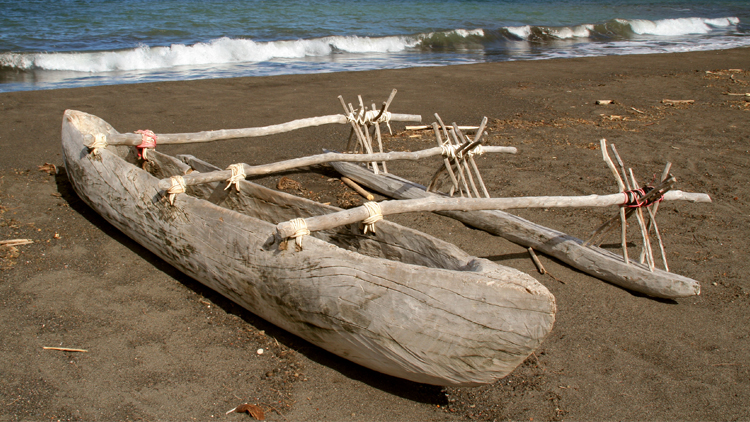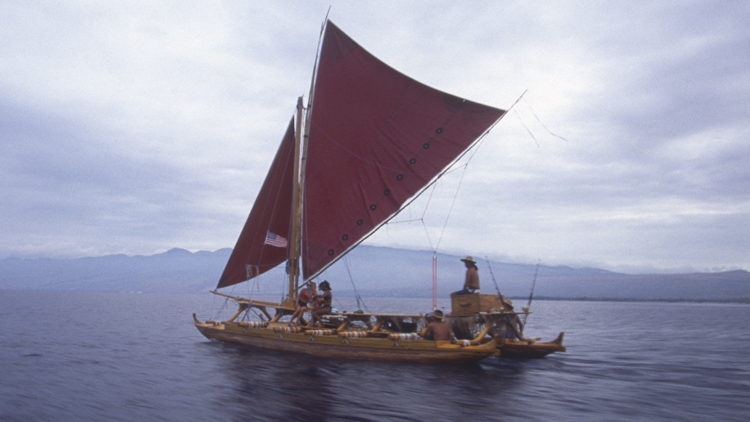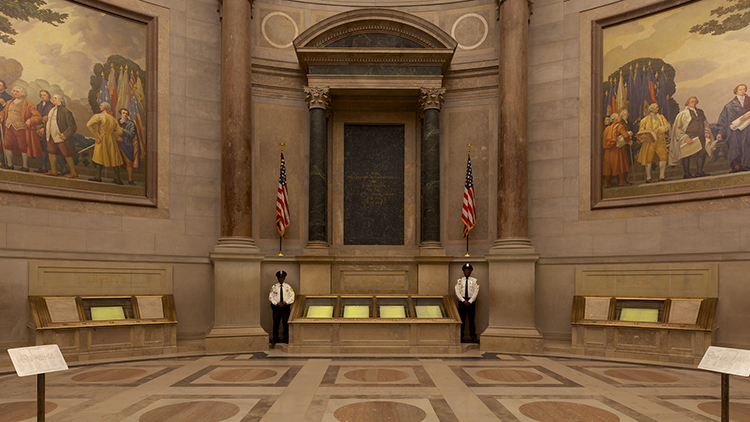
Imagine you are on an island in the middle of the Pacific Ocean. Your destination is hundreds of miles away. Maps and compasses do not exist. The environment is the only thing you can use to make the journey. Polynesians were experts at this type of voyage. They navigated the Pacific Ocean using natural elements to find their way.

Thousands of years ago, people from Southeast Asia sailed the seas and discovered an area in the Pacific Ocean. This area became known as Polynesia, which means many islands. Polynesian people built special boats called double-hulled canoes. They carved the hulls out of tree trunks and tied them together. A central platform of beams laid across them. This made the boat sturdy enough to cross the dangerous ocean. Double-hulled canoes were powered by sails and steered with one oar. The average voyaging canoe was between fifty and sixty feet long. It could hold about twenty-four people, their food supply, and materials to use in new lands.
Voyagers traveled for many days and nights. They used the stars, the Sun, the Moon, and the clouds to guide them. They also observed the swells of the ocean and the wind. Polynesians took pride in understanding the natural world around them. Navigating the waters through observation and experience became part of their culture.
What Do You Think? How is traveling today different than traveling long ago?
Reading Response Click on this link to respond to your reading. Print out the response page or upload it to your classroom site.
Photo Credit: (t)molloykeith/Getty Images, (b)(c) Michael Melford/Getty Images



